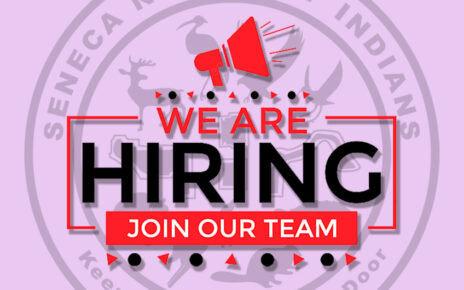By Don “Flip” White
For this Agwadeyësta’ Do:gë:h installment we want to share this wonderful story about a real experience of a FKS teacher and her student. We hope you enjoy it.
This year has been hard for all of us. Here at the Faithkeepers School we have managed to figure out how to keep pushing forward, for that we are all grateful. We are also grateful to our children and their families for trusting us in continuing to move forward during this pandemic.
Although we face the everyday obstacles of the ‘new normal’ our language learning and use has been flourishing. As a teacher I can feel myself growing and my ears getting stronger in tune with hearing and understanding the language. Through the Esther Martinez Initiative grant we have been given the opportunity to teach children in the Montessori classroom in the mornings and have Seneca Language classes in the afternoon. We have two great instructors working with the FKS staff on strengthening our Seneca language skills. Our goal is to be able to speak to each other and the students only in the Seneca language here at the school.
Sara Droney and John Block, who are also FKS staff, are doing an amazing job as our language instructors. Sara focuses on daily conversation language and John focuses on the cultural language, stories, and protocol that coincides with our ceremonial cycle.
We have been studying each ceremony along with the appropriate time frames in which they happen according to our seasonal cycle. We recently have gone over Wasa:se’ in our class with John. Wasa:se’ is the ceremony that gives thanks to the Thunders. We include them in Ganönyök (Thanksgiving Address) and talk about their duties with the children. We teach them not to fear them because they help take care of us and the earth. We teach them that they bring the rain and how important water is to keep our bodies and the earth well.
A testimony of how I can see the growth in ourselves as teachers is, while at the actual Wasa:se’ ceremony I could follow along with John as he was speaking. He went through everything he was going to say with us in class before the day of the ceremony. Hearing the words and understanding them hits you harder in your heart. It resonates deep down.
You can feel the strength of the words and of all the spirits happy to see us continuing. It makes me feel more connected to what these ceremonies really mean and why we must keep them and the language alive.
I saw one of my students at Wasa:se’. She was happy to see me and immediately came over to sit next to me. This particular student has a very good amount of Seneca language in her repertoire. Her mother is also a language learner and teacher. She uses strictly Seneca with her at home and it really shows. When she came to sit next to me she spoke to me in all Seneca and I could follow and respond back to her. This child is completely bi-lingual and at times her Seneca vocabulary is better than mine. For this little girl to come up to me and use exclusively Seneca with me at the longhouse gave me chills. This is our goal coming to fruition right before our eyes and it can only get better. We’re only in our first year of afternoon classes and I feel my brain “thinking in Seneca” and it becoming easier to respond and pull the words out. The child using all Seneca with me tells me she herself can see the growth within her teachers and that our confidence is growing. I left with my heart full and knowing that I am where I am meant to be; on this path to help keep our language and culture alive. Little stories like this keep the motivation strong. We will not let our language die. These kids give me hope.
Nya:wëh, Courtney Crouse




